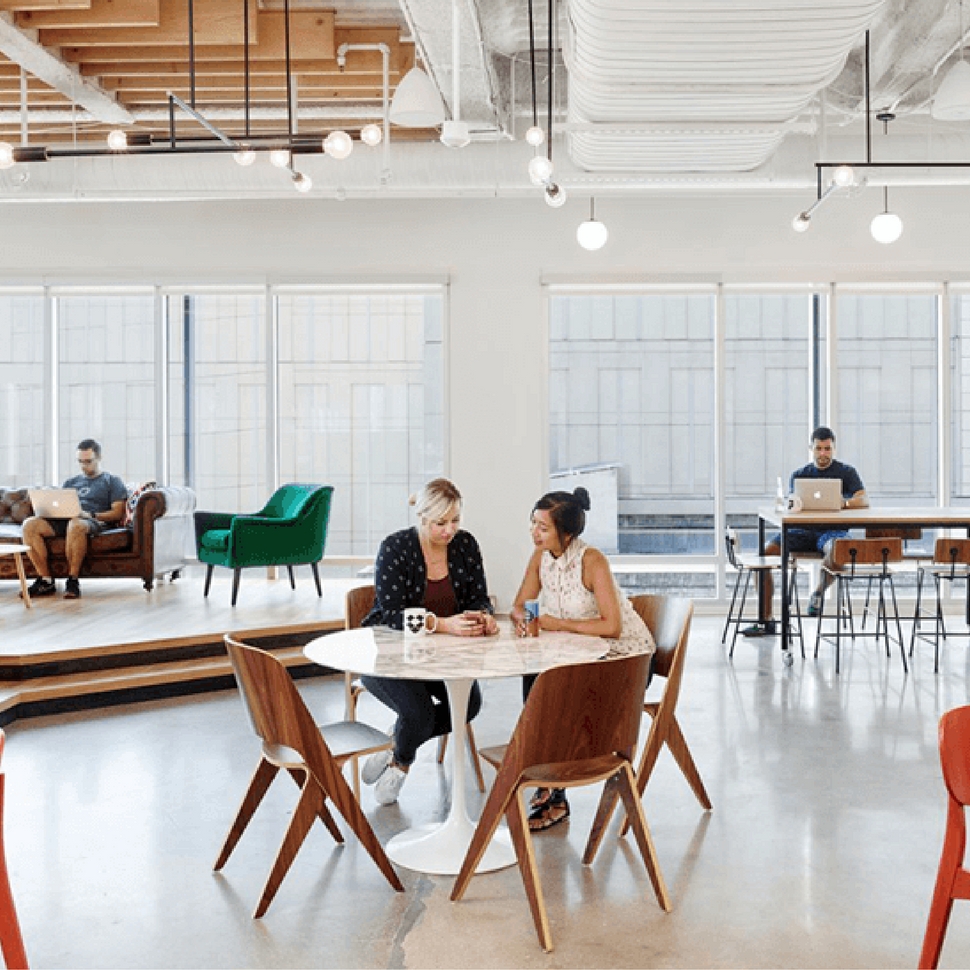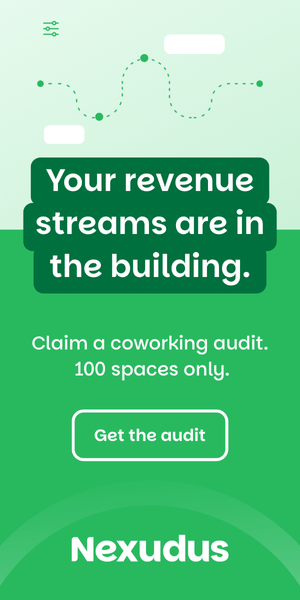Article by Kyle Pinto, Chargespot | Feature image via Kontor
From the open office to the smart office, we’re seeing a lot of changes take hold as companies turn over on their leases. Firms are looking at everything from innovation centres to coworking and flexible spaces to create a workplace that meets the demands of their workforce.
But a diverse workforce isn’t the only factor driving a different approach to what the workplace means.
Recent studies have found that employee engagement, worker wellness, sick days, and overall happiness, are all highly influenced and affected by the physical workplace. These factors have also been linked to performance, as well as the ability to attract and retain employees.
The purpose of the workplace has changed. It’s evolved.
This has forced companies to reimagine the experience that their workplace provides to employees. Gone are the days when work was a 9-5 job; technology has made sure of that.
Employees can work from anywhere today, at any given time.
This means that while workers can perform tasks and collaborate remotely, they also take work home with them on their smartphones where they can constantly be reached. This perception of an added workload has brought to light some of the hazards that accompany it.
Technology isn’t the only element changing the way we work. The new workforce generation is also demanding a different way of working.
Organizations redefining what work is
As tech firms and startups have catered to the new generation’s needs, they have paved the way for more traditional organizations to make changes to the way they operate; including the workplace.
The workplace of today is all about collaboration. It’s about fostering casual and real connections between employees and creating a better experience at work for employees; an experience that actually engages them (68% of US employees are disengaged).
How organizations are doing it
While technology means that more work can be done off site, it has also changed the context of the office and emphasized the importance of certain types of experiences.
We’re seeing workers focusing more on face to face meetings when they are working from the office. This has helped companies develop broader and more efficient real estate strategies that embrace open and unassigned layouts to utilize space efficiently.
Similarly, in the modern workplace you’ll also notice more meeting rooms for multiple collaborative sessions throughout the day. The sizes of these meetings spaces vary, and companies are getting granular in how to treat them.
For example WeWork uses data insights to look at how to better design future spaces. Meeting room booking apps are exploding as companies look to manage their multitude of areas that employees can connect and exchange ideas in.
A focus on wellness
The other benefit of the modern workplace is that it’s being designed to allow more natural light in.
This goes hand in wellness initiatives implemented by various companies. While tech companies are known for pushing hard deadlines and attracting the best and brightest, they also undertake initiatives like mandatory vacation or even, in-house massages to help workers reduce stress levels.
When CBRE underwent a massive workplace overhaul across North America, it built out all of its spaces to the WELL Building standard. New standards are emerging as well, like Fitwel which launched this year in the US and is administered by the CDC.
Technology
Finally organizations are better leveraging technology to make the workplace more intuitive for employees. Even traditional firms like law practices are adopting leading tech like intuitive charging to help enable employee productivity and provide a better employee and client experience. It’s one way that workplace managers can remove barriers that take away from a seamless and easy to interface with, work experience.
At Deloitte’s edge in Amsterdam, technology is utilized for everything down to triggering a response when milk levels in coffee machines are too low. While it may seem trivial it’s an example of the level of granularity that can be used to enhance the workplace as we move towards a smart office. These types of technologies work for all employees to ensure that the positive experience can be shared. User interface is crucial for these.
As we move into 2017, it’s important that workplace managers of any space, whether traditional offices or flexible spaces assess what type of experience their workplace provides.
Is it clunky or seamless, antiquated or smart? Better experience allow users to harness their most valuable assets: themselves and their employees.
–
Kyle is head of Community at ChargeSpot, he collaborates with industry leaders to share the latest on creating a better workplace. Stay relevant with his free weekly insights on Workspaces.


 Dr. Gleb Tsipursky – The Office Whisperer
Dr. Gleb Tsipursky – The Office Whisperer Nirit Cohen – WorkFutures
Nirit Cohen – WorkFutures Angela Howard – Culture Expert
Angela Howard – Culture Expert Drew Jones – Design & Innovation
Drew Jones – Design & Innovation Jonathan Price – CRE & Flex Expert
Jonathan Price – CRE & Flex Expert













